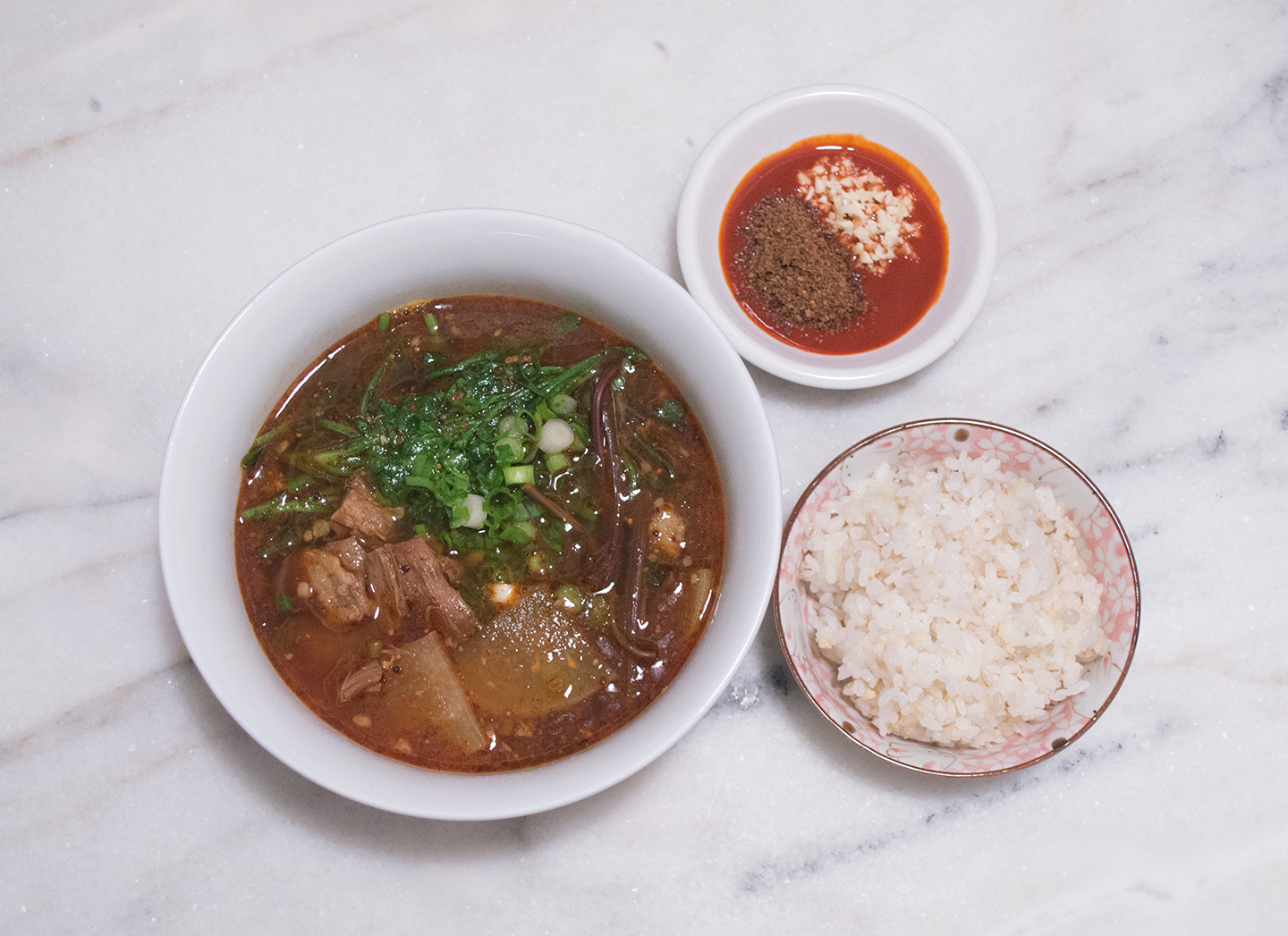
Like the regular goat stew we made before, the spicy goat version was something we collectively wanted to make at Everybunny HQ. We love spicy food, and being that it’s similar to the beef brisket soup we shared with you last year, we knew the spicy goat stew would be just as delicious.
We described this for you guys before that the stew is more like a hearty soup; it has root vegetables, meat, and greens to balance out flavors, and can be enjoyed on its own. It’s great with a hot bowl of rice and side dishes, but the banchan can be kept to a minimum, like kimchi and maybe a pickled vegetable or two. The focus is the soup!
Here’s a little excerpt from my regular goat stew entry: **In Korea, it’s served as a booster; it’s a hearty soup, more than a stew, and often called Boyang Tang (보양탕), meaning it’s a stew to restore energy and give vitality to one’s body.** I would say, as with any type of soup, it’s good to have a balance of meat, vegetables, and starches to fill one’s tummy and keep them going, especially when the weather begins to get colder.
Kitty loves the spicy goat version more, and I’m keen to agree!
Recipe for Maeun Yeomso Tang (매운 염소탕) - Korean Spicy Goat Stew
- About 3 Liters of Goat Stew
- Preparation:
- Cooking:
Ingredients
Goat Soup Base:
- 1¼kg (2¾lbs) Goat Leg
- 4L (135oz) Water
- 12g (2T) Ginger
- 10g (3) Garlic Cloves
Seasoning for Goat:
- 12g (2T) Perilla Seed, coarsely ground
- 15g (1T) Sesame Oil
- 1 large Scallion, chopped
- 3g (1t) Garlic, minced
- 3g (1t) Kosher Salt
Soup:
- 150g (about 5½oz) Daikon Radish
- 20g (1T) Hot Pepper Paste (Gochujang)
- 20g (2t) Fermented Soybean Paste (Doenjang)
- 2g (1t) Red Pepper Flakes (Gochugaru)
- 120g (1 cup) Fernbrake, cooked
- 100g (12 sprigs, or one bunch) Shungiku/Kikuna leaves
- 20-30g (small bunch) Garlic Chives (Buchu), optional
- 6 small Taro, optional
Dipping Sauce:
- 7g (1t) Hot Pepper Paste (Gochujang)
- 5g (1t) Water
- 3g (1t) Garlic, minced
- 3g (½T) Perilla Seed, coarsely ground
- 5g (1t) Sesame Oil
Procedure
- Place the meat in a large pot, fill with water, and cook for 10 minutes. Pour out the water and rinse the pot.
- Refill the pot with 2 liters of water, and throw in the ginger and garlic cloves. Bring the goat and aromatics back to a boil, and cook for 1 hour. Reduce the heat to a simmer for an additional 30 minutes.
- Remove all of the meat, add the bones back into the stock, top up the pot to 2 liters of liquid, and boil for 45 minutes.
- Strain, cool, then refrigerate the stock. Discard the bones. Once the stock is chilled, scoop out the fat.
- While the soup base is chilling, season the meat: shred the meat into thick strips and combine all of the seasoning with the goat. Mix well and set aside.
- Peel the radish, cut into half, then slice into half moons about ¼-inch thick.
- Pour the soup base into the pot; add the seasoned meat, radish, gochujang, doenjang, and gochugaru; and simmer the contents for 30 minutes, or until the radishes are cooked. At the last 2-3 minutes, throw in the fernbrake and shungiku.
- Make the dipping sauce while the spicy goat stew is simmering, and when the stew is ready, serve it together with a hot bowl of rice and some kimchi!
- Add some salt and black pepper to taste, and fresh chopped scallions.
*Bunny Wisdom*
- The goat leg is often cut into smaller pieces, so it's easier to cook in a pot.
- I do an initial boil to get rid of any blood and fluids from the meat.
- A good strong boiling of just the bones brings out some of the deep flavors. I like to boil the bones separately after removing the meat, but you can choose to begin chilling the stock at this step.
- If you happen to have a fat separator, you won't have to chill the stock to remove the fat. Proceed to remove the fat, then begin bringing all of the stew contents together.
- Perilla seeds can be found at your local Korean supermarket. Once the package is opened, it is best used within a couple of months, as the natural oils in the seeds can stale. To prolong their shelf life, do not leave it in your pantry, but pour the seeds into a container with a lid (or a freezer zip bag) and freeze. These seeds are delicious in soups, adding a nutty flavor to your dishes. It's also used to lessen the fishy smell in fish soups and braises.
- If the radish is large in diameter, cut the radish into quarters before making slices.
- Taro is nice inside soups, because it makes the meal heartier. If you decide to use taro, find the small kind. Peel them and halve them before placing them in the soup with the radish slices. In fact, you can substitute one for the other, add more radish and less taro, or have more taro and less radish. The ratio is up to you.
- Shungiku/Kikuna is Garland Chrysanthemum. You can often find this in Asian supermarkets. They bring a clarity and freshness to soups and stews, but cook quickly. I only like to put the greens in at the last few minutes before I turn the flame down. This is also the time you would add the garlic chives, as they cook quickly.
- Remember to cut the fernbrake, garland chrysanthemum, and garlic chives down to edible lengths before adding it to the soup. I slice them to roughly 2-inch lengths.
- The dipping sauce is for the shredded meat, though the sauce isn't required.

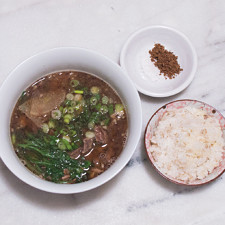
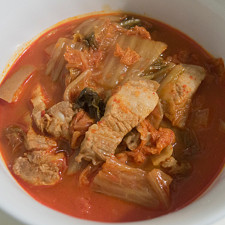
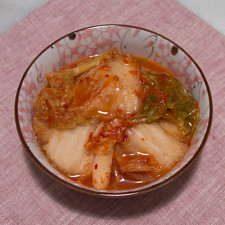
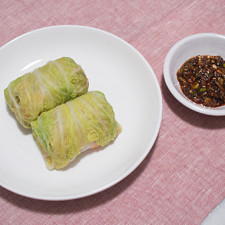

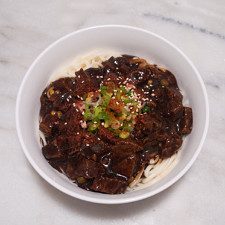
No thoughts on "Maeun Yeomso Tang (매운 염소탕) – Korean Spicy Goat Stew Recipe."